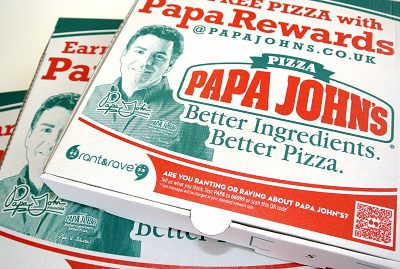Taking a political stand on almost any issue has long been considered a risky move for companies — particularly those, like retailers, that must appeal to consumers across the political spectrum. But the violence that took place in Charlottesville, Va. earlier this month has been a clarifying moment, not only for the country as a whole but for a number of corporate brands. Faced with the resignation of numerous CEOs, President Trump disbanded his White House advisory councils as companies sought to distance themselves from his controversial responses to the neo-Nazi march.
Branding expert Deb Gabor, CEO of Sol Marketing, sees an important opportunity for brands at crisis points like this —to state unequivocally where they stand. “The best brands are the ones that align themselves very strongly with the beliefs and values of their target audience,” said Gabor in an interview with Retail TouchPoints.
Gabor offered timely advice on why CEOs and the brands they represent may have to abandon their careful political neutrality, and how to do so in ways that both reflect their values and, if possible, turn negatives into positives.
Retail TouchPoints (RTP): Is it possible for brands to totally steer clear of politics in today’s climate?
Deb Gabor: In today’s activist consumer environment, it’s often said people are voting with their wallets, helped by initiatives like “hashtag boycott [blank]”. That’s one reason it’s increasingly important for retail brands to be very wise and shrewd in how they indicate their support for or against things.
RTP: If retailers do take a stand or make a statement, how can they do it in ways that don’t push them into the mud?
Gabor: One thing is to not play character politics. Many CEOs making statements [after Charlottesville] have not been standing up for what they hate, but for what they’re for. Brands have come out and said, very openly and very deliberately, that they are for inclusivity, diversity and the rights of the individual. Rather than saying ‘We’re against this one individual,’ they’re saying they’re against hate and racism. I think that’s the key: if you are going to get enmeshed, you have to do it in a very thoughtful and deliberate way.
RTP: Can positive things ever come out of situations like this?
Gabor: A brand that turned this into a positive message was the TIKI torches brand. Who was thinking about Tiki torches before the hashtag #tikitorchnazis started trending? The company came out right away with a statement that said, ‘We’re about summertime backyard fun, not hate.’ Automatically its brand awareness skyrocketed. This was even more remarkable given that most people didn’t even think Tiki was an actual brand — they probably thought it was a generic term like Kleenex. But now this 70-person company based in Wisconsin is front-page news for very positive things. It’s always a great idea to create positive brand associations.
RTP: What role(s) should a company’s CEO play in cases like these?
Gabor: I always say the CEO is the primary steward of the brand, so he or she needs to represent the brand’s point of view. At the same time they manage the complex relationships among the customers, the brand itself and other stakeholders, including financial supporters. But the CEO has to be the leader — otherwise there’s a big disconnect. This goes all the way back to the United Airlines brouhaha earlier in 2017. That CEO had been recognized as Communicator of the Year, but that communication didn’t empower the airline’s employees on the front line to make decisions supporting the concept of ‘flying the friendly skies.’ The CEO is at the center of the brand ecosystem, so it’s important that CEOs are leading the delivery of the brand messages with their own actions and statements.
RTP: What are some other crisis management techniques that brands can use if they are associated, even inadvertently, with a negative situation?
Gabor: Part of the mechanics of crisis management is being really transparent, particularly with your employees. Your brand is inclusive of everyone, all the way down, and the ‘ecosystem’ also includes the other companies you do business with. We’ve seen that major charities, including the American Red Cross, the Cleveland Clinic and the Susan G. Komen Foundation, have pulled out of contracts for having events at Trump’s property Mar-A-Lago. They are not in any way directly associated with the events in Charlottesville, but these organizations are thinking two steps ahead, as well as thinking about their donors, partners and supporters. You have to think to the furthest reaches of what and who your brand touches.
If it’s a time-sensitive crisis situation, it’s important to proactively communicate about the next step that the brand is going to take: ‘Here’s how we’re going to communicate about this issue at the next juncture.’ It’s also important to focus on the top-line messages, such as ‘We care, here’s what we’re going to do immediately,’ and to reinforce basic values and commitments.
RTP: What about when it’s a long-term situation that comes to light, i.e. a news report that a retailer or apparel manufacturer is getting its products from sweatshops?
Gabor: If it’s something the organization feels like they want to correct, the CEO needs to lead the charge. I’m not naïve enough to think that the CEO knows everything that’s going on throughout an entire company. I lead a very small company and there are projects and initiatives that are happening on a day-to-day basis where I don’t know the specifics. But if an employee has made a decision that isn’t ‘on-brand’ for the organization, it’s up to the CEO to act as soon as he or she hears about it. Not knowing what’s going on is not an excuse. It’s the CEO’s responsibility to take responsibility, to say ‘This was going on on my watch, but it’s not sanctioned by us and doesn’t accord with our policies, processes, values and beliefs. Here’s what we’re going to do to take action about it.’ The CEO needs to act as soon as they hear about a problem, especially if it has taken time to come to the surface.










